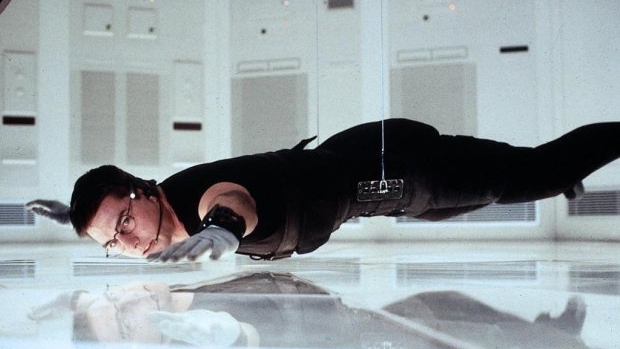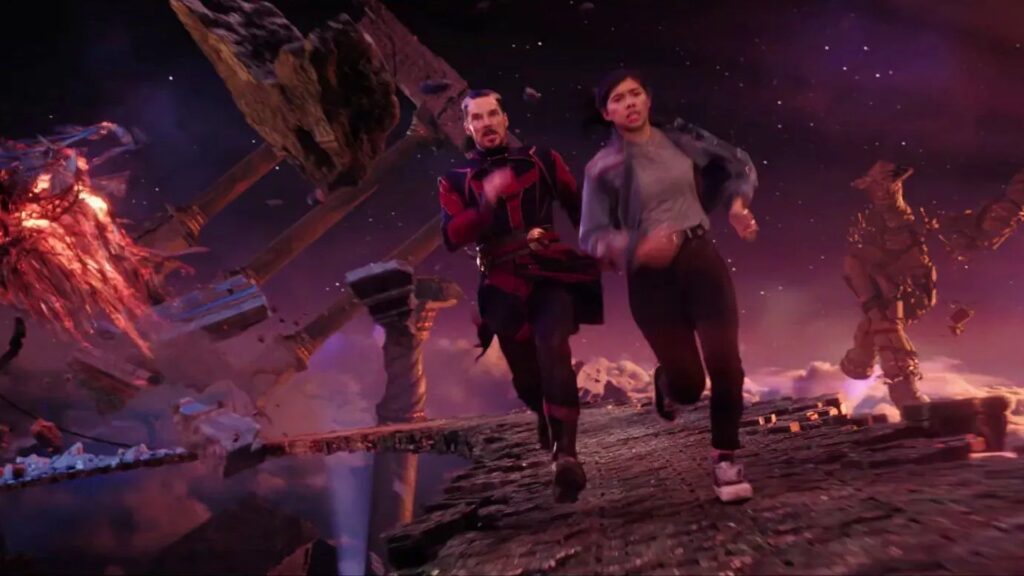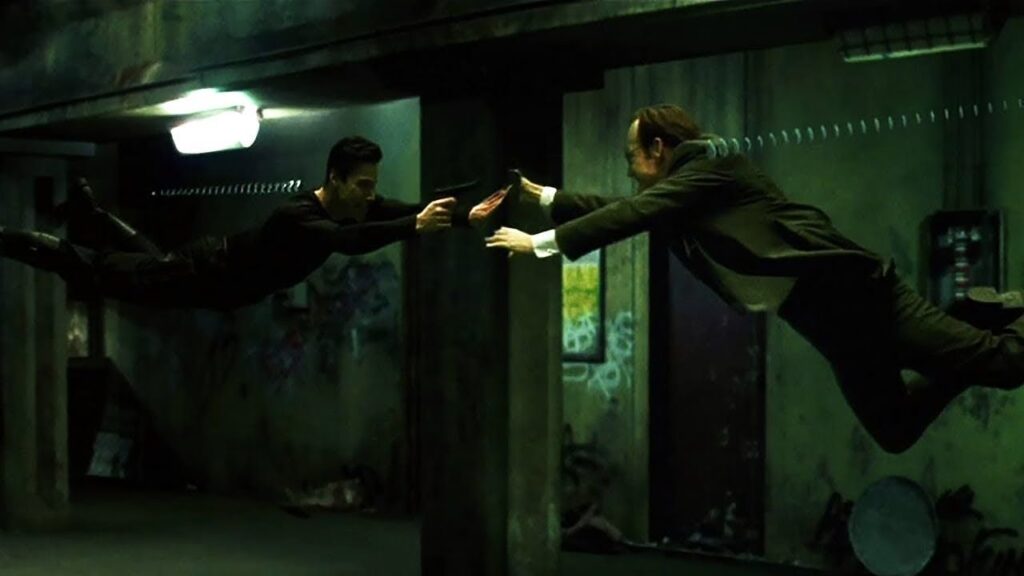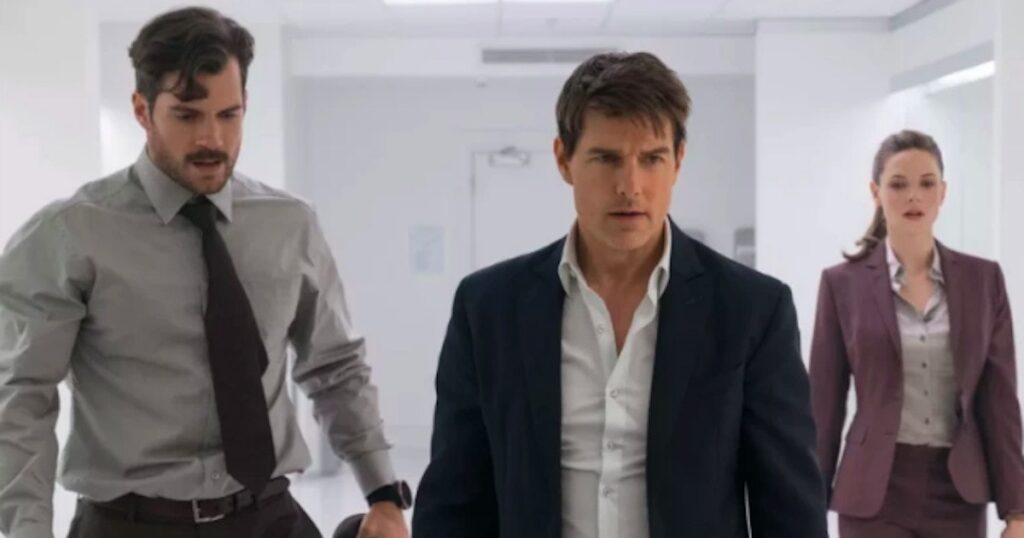And the power of containing your set pieces!

This weekend, I’ll be seeing the latest Mission Impossible movie. These movies have become known for their set-pieces, specifically the ones that Tom Cruise does himself. Tom Cruise scales a real skyscraper. Tom cruise HALO jumps out of a plane. Tom Cruise takes off on the side of another plane. Tom Cruise drives off a cliff on a motorcycle.
But Mission Impossible has plenty of other big set pieces, such as helicopters chasing trains through tunnels. Motorcycle racing through the hearts of European cities.
And I’m here to tell you that all of these set pieces suck.
Well, maybe “suck” is a strong word.
But none of them truly engage the viewer. They’re just throwing a lot of movement at you and hoping you say “Wow.” Some people do say “Wow.” But it’s always an empty “Wow.”
I don’t just blame Mission Impossible for this issue. I blame all movies. Specifically Hollywood movies. They have destroyed the set piece mainly because they have no idea what actually engages a viewer anymore.
They think having a million things going on onscreen at once with as much action as possible is the way to go. And they’ve been doubling down on that strategy for over a decade now. They ask, “How can we create MORE movement? MORE wows?”
In the process, they’ve lost the thread.
They’ve actually lost it so bad that it’s ruined 99% of big-budget studio films.
What Hollywood has forgotten is that it isn’t the big flashy action set piece that gets audiences excited. It’s the contained smartly-crafted set piece that audiences remember for the rest of their lives.
There’s no better example of this than the file copy hack at CIA headquarters in the first Mission Impossible. It’s the famous scene where Ethan Hunt is lowered down into the white computer room and must steal a file from an off-line computer without tripping any of the advanced alarms that have been put in place.
How I do know this is the best set piece?
Cause when I say, “Mission Impossible,” what is the first image that comes to mind? It’s that scene. And that’s because *that* scene is *that* good.
But why is it good? Why is it more memorable than all of the garbage set pieces that these superhero and Fast and Furious and Star Wars movies keep pumping out?
For starters: IT’S SIMPLE.
I cannot emphasize how much better your set piece will be if you make it simple. Dude is lowered into a room and must hack a computer.
THAT’S IT!
That’s the scene.
There will not be a single person in the movie audience who will not understand what’s going on in that scene.
Contrast that with Dr. Strange when Strange and that America chick were running around on floating virtual objects. Did anyone know what was happening there? I didn’t.

That’s the mistake the studios are making. They’re creating these big visually wild set pieces that don’t make a lick of sense. And then young writers see these and they think, “Oh, that’s the way you’re supposed to do it.” So then *they* write big awkward CGI scenes. Those scenes are then put in the next superhero movie. And it becomes a vicious circle.
Which is why nobody knows how to do this anymore.
So, for starters, when you’re trying to construct a set piece, don’t think big first. Think SMALL first. Small is much easier to understand. It will require way less geographical orientation. And it will allow you to come up with a set of simple rules that you can then play with to make your set piece as dramatic and suspenseful as possible.
Which is exactly what the CIA computer hack scene in Mission Impossible does.
It’s a tiny room. That’s our set piece. That and the vent.
Once you have your contained space, set up the rules of the set piece. In this case, the room is the most sophisticated room in Langley. It detects weight changes, sounds, even heat.
This is where the fun starts. You have these challenges, such as, we can’t walk in because it will detect our body weight. Okay, so I guess we have to suspend Ethan and lower him from above. How do we do that? Well, there’s this vent here. Okay, but how do we create a suspension system within that small space that’s going to be reliable?
Notice how even before we’ve gotten to the set piece, we’re already becoming invested in it. Nobody does that anymore. They just throw us into some wild mid-city chase with a bunch of characters we barely know.
Then, once we get to the set piece, we can continue to have fun with the rules we’ve set up. For example, if Ethan so much as touches the floor, it will trigger the weight sensor and they’ll be caught. So, one of the first things that happens is that the cords slip and Ethan falls quickly towards a collision with the floor, only to be caught at the last second.
I’ll never forget the collective gasp from the audience in my theater when that moment happened. That’s when you know you’ve created an awesome set piece.
The rules are so perfectly set up in that scene that there’s a moment where Luther has a bead of sweat that’s in danger of dropping from his nose down into the room and hitting the floor, and we’re all on the edge of our seats hoping it doesn’t happen.
Give me one Marvel set piece in 25 freaking films that achieves that. You can’t!
If you want to upgrade your set pieces, do everything I just said. But there’s one additional thing you can do to bring it to the next level: ADD AN EMOTIONAL ELEMENT – something between the characters that gives the scene a little extra oomph.
Take The Matrix for example. One of the great set pieces in that film is Neo fighting Agent Smith in the subway. Once again, contained, right? Simple, right? But, in addition to the Mission Impossible scene, we have some history between these two. Agent Smith was the bully following Neo around in the Matrix. And Neo is someone Agent Smith needs to dispose of if he’s going to execute his plan.

The irony here is that the Wachowskis were hoping to get Will Smith to star in The Matrix so they’d have this giant budget, which would have allowed them to write much bigger and flashier set pieces. But when they had to settle for Keanu Reeves, they had to rethink all their set pieces which made them into what I’m telling you to do here.
Contained. Simple.
The dojo fight, the lobby gunfight, even Morephues rescue is contained to an office in a skyscraper and then a helicopter right outside.
I don’t think I need to remind you what happened when the Wachowskis got all the money they wanted for the sequels. Big bombastic set pieces that didn’t hold a candle to anything that happened in the much smaller first film. If that isn’t proof that smaller more contained set pieces are better, I don’t know what is.
Getting back to Mission Impossible, a few years ago we had that well-received bathroom brawl – the one where Henry Cavill’s character and Ethan Hunt kept pummeling people who came into the club bathroom.

That’s a contained scene. So why isn’t it as famous as the Langley hack scene? This is your last lesson so pay attention: BECAUSE THE HACKING SCENE HAD STAKES. There was this long build-up towards it, which, on its own, created stakes. Since we had so much personal time invested in it. But even still, they needed something vital in that computer to execute the bigger plan.
The bathroom scene was fun but it was haphazard. There’s nothing truly on the line here. It’s just people beating each other up. So when you create that set piece, make sure there’s something big on the line. Or else, even the best execution of the scene isn’t going to grab the audience and shake them.
I hope writers take this to heart. It’s one of my crusades as a teacher of screenwriting. I see so many movies making this mistake and they’re just creating this garbage because of it. When it comes to set pieces, it’s always better to be think contained, to think simple, and to be clever. Only go big as a last resort.
Good luck!

